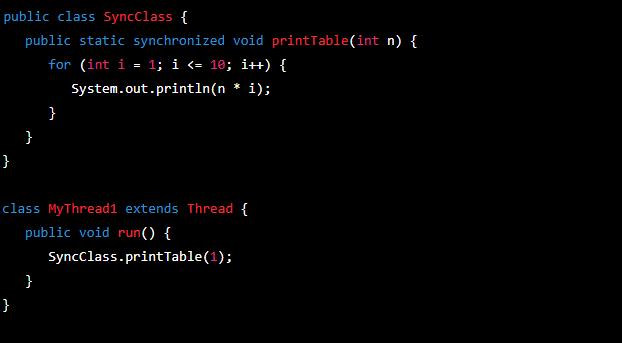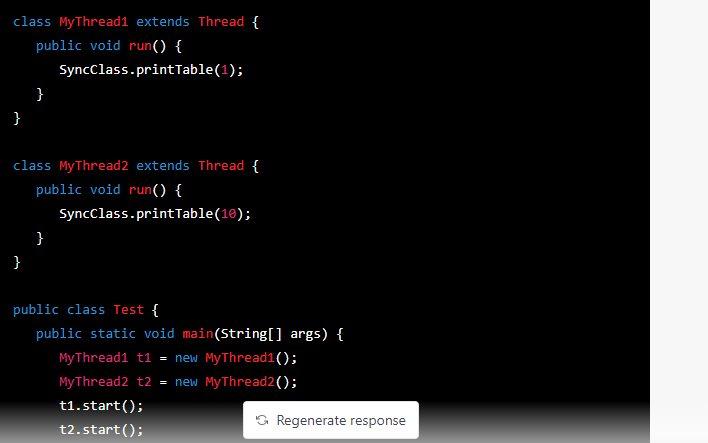Synchronization is a mechanism in Java that ensures that only one thread can access a shared resource at a time. It helps in avoiding race conditions, which can cause unpredictable and incorrect behavior in a multi-threaded environment.
There are two ways to achieve synchronization in Java:
- Synchronized Method: You can declare a method as synchronized by using the
synchronizedkeyword. When a thread invokes a synchronized method, it acquires a lock on the object that the method belongs to. The lock is released when the method returns. Only one thread can execute a synchronized method on an object at a time.

- Synchronized Block: You can also synchronize a block of code instead of an entire method. This is useful when multiple threads need to access different parts of the same method, but you want to synchronize access to a shared resource.

It’s important to note that synchronization has an overhead, so it’s not always the best solution for performance-critical sections of your code. When possible, you should use synchronization only to protect critical sections of your code and use other concurrency mechanisms, such as atomic variables or lock-free data structures, to increase performance.
java Training with placements in Coimbatore will help students to understand the object-oriented programming in a better way. They will get an understanding of how to write a program using Java. The course also includes a session on how to debug programs written in Java.
Static Synchronization in java
Static synchronization in Java is a mechanism to synchronize the execution of a block of code by multiple threads on the class level instead of on the instance level. In other words, it ensures that only one thread at a time can execute the synchronized code of a particular class.
A synchronized block can be used to control the access to a shared resource in a multi-threaded environment. When a thread enters a synchronized block, it acquires a lock on the class object, and any other thread that tries to enter a synchronized block of the same class will be blocked until the first thread leaves the block.
Here’s an example of how you can use static synchronization in Java:


In this example, two threads MyThread1 and MyThread2 are executing the same printTable method. However, the method is declared as synchronized, so only one thread can enter the method at a time. The lock on the class object is used to control access to the shared resource, ensuring that only one thread at a time can execute the printTable method.

